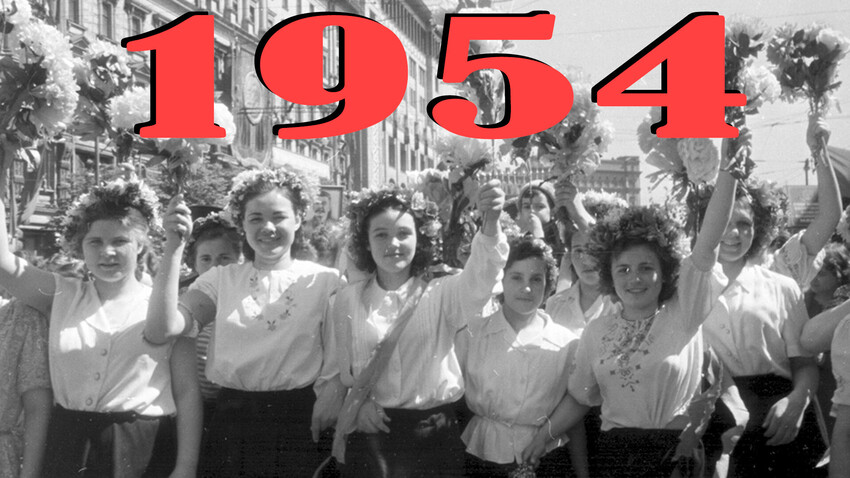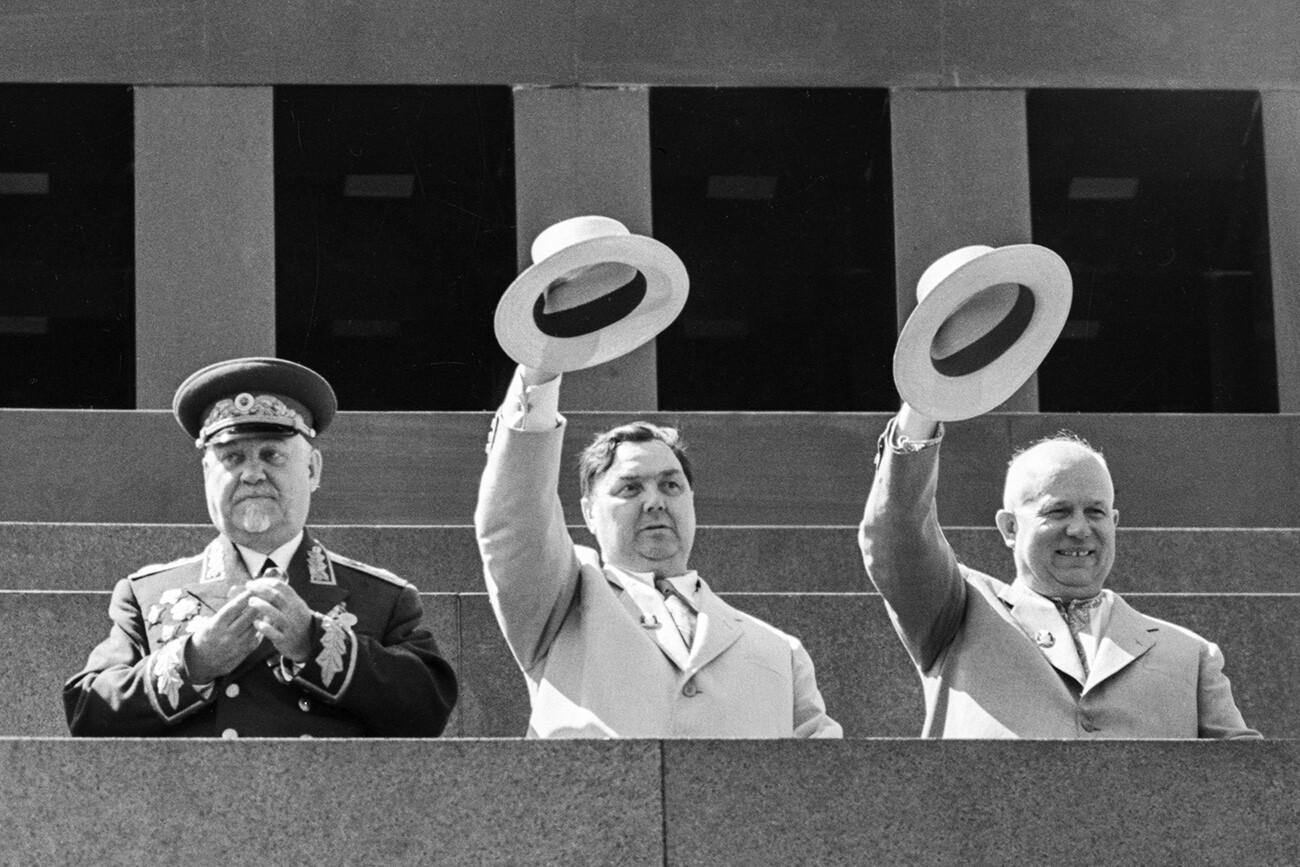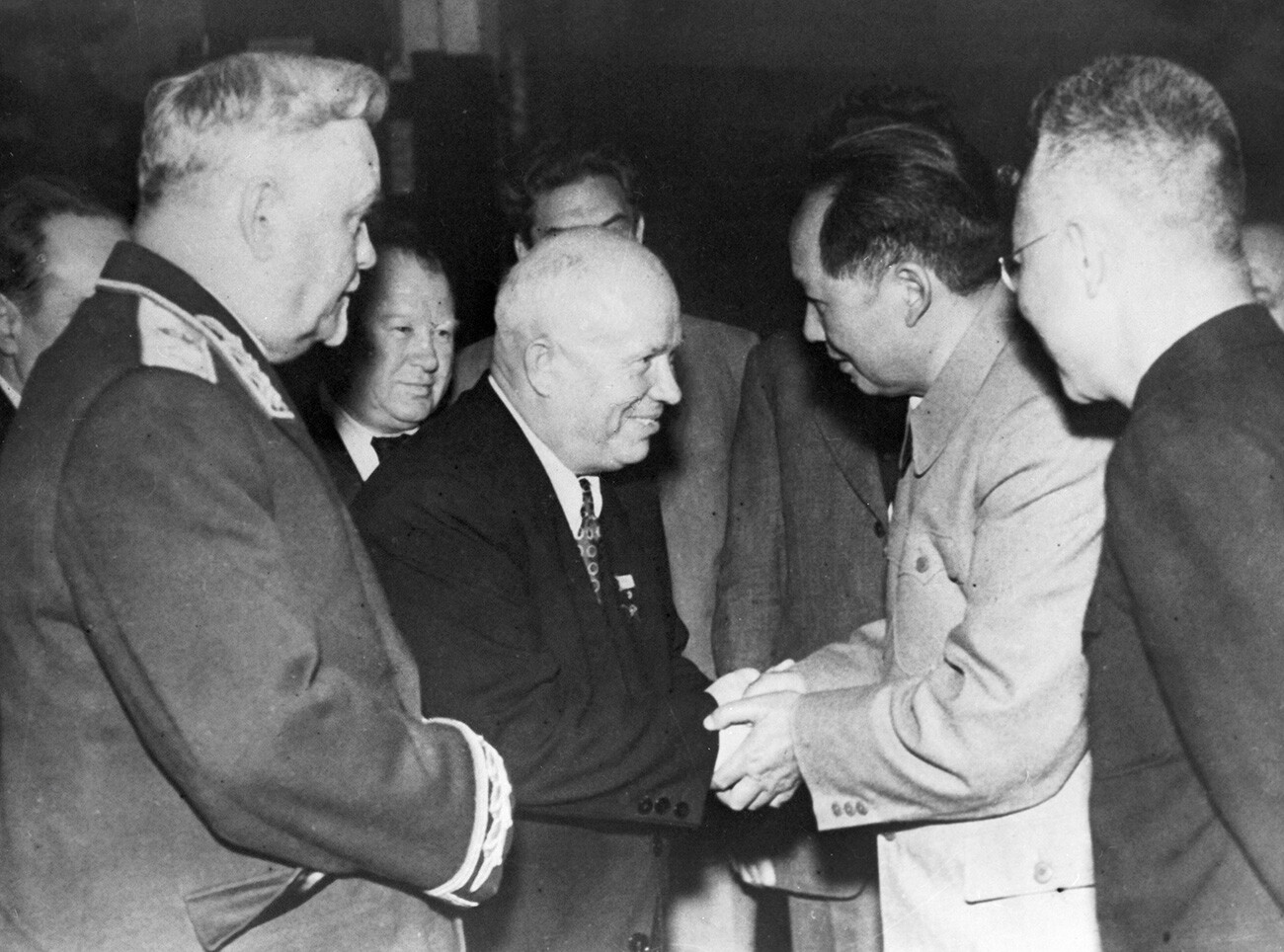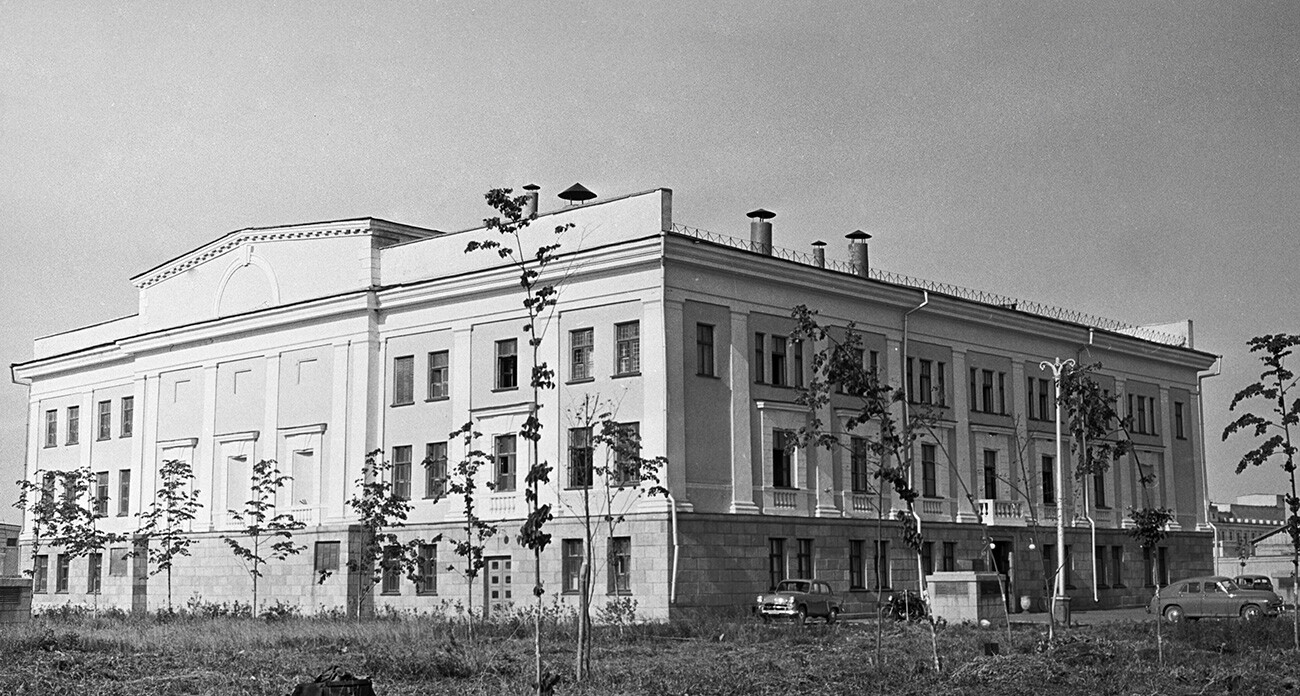
On March 5, 1954, on the anniversary of Stalin's death, thousands gathered at the Lenin Mausoleum, on which Stalin's body lay (until 1961) and which also bore name on the facade.
However, there have always been long lines to visit the mausoleum.
USSR Minister of Defense Nikolai Bulganin, Chairman of the USSR Council of Ministers Georgy Malenkov and First Secretary of the Communist Party's Central Committee Nikita Khrushchev pictured below standing on the Mausoleum tribune (from left to right).

After Stalin's death, Moscow was still developing according to his plan. For example, the Pekin Hotel, another building in the style of Stalinist classicism, was almost completed.
By 1954, the reconstruction and transformation of the ‘All-Union Agricultural Exhibition’ (later and better known as the ‘Exhibition of Achievements of National Economy’, aka ‘VDNKh’) had been completed. It acquired a monumental appearance and many pavilions were built in the Stalin Empire style. The photo below shows a view of the Stone Flower fountain and the Main Pavilion.
Everyone visiting the capital had to drop by the ‘GUM’ (‘State Universal Store’) on the Red Square. It had a luxurious design and you could buy scarce and rare goods there. Pictured below are customers sampling scents in the perfume department.

And below is a view of ‘GUM’ from the Kremlin's Spasskaya Tower. Today, the Red Square is pedestrian-only, but, in the 1950s, vehicles used to drive across it. The Bolshoi Theater can be seen in the background on the right.
The Moscow Planetarium was also a place of attraction for both children and adults.
Below, workers are assembling a ‘Moskvich’ automobile.
On August 13, 1954, the Communist Party launched a course for the development of the uncharted Soviet regions. A huge number of workers went to sow the previously unplowed lands of the Volga region, the Urals, Siberia, as well as the Far East and Kazakhstan.
Young people traveling to these regions often carried with them the essentials, which, for Soviet people, were chess boards and books!
Soviet propaganda, meanwhile, romanticized agriculture. People were told about how cheerful and friendly it was to live at collective and state farms.
"Tomorrow is Sunday!" Even in rural work conditions in the uncharted regions, Soviet youth still managed to take care of themselves and spend their leisure time culturally.
Attention to agriculture bore fruit, while milk and meat production increased markedly. The photo below shows two women working at a milk bottling unit.
Below, the chairman of a collective farm in Yakutia checks fur pelts before sending them to the city.
Soviet authorities, meanwhile, actively encouraged people to study, go to night schools, and upgrade their qualifications. Many people combined work with education.
An important part of the life of a Soviet person was political information. In workshops and factories, in houses of culture, in all enterprises there were meetings to discuss the latest news and the latest Communist Party resolutions. The photo below shows female employees at a watch assembly factory listening attentively to the latest newspaper being read out aloud.
In 1954, the USSR and China were preparing to celebrate the 5th anniversary of the signing of the ‘Sino-Soviet Treaty of Friendship, Alliance and Mutual Assistance’.
Stalin established relations with Mao Tse Tung's China, but, after his death, they began to deteriorate over time, especially when Nikita Khrushchev began de-Stalinization.

In 1954, the 300th anniversary of the ‘Pereiaslav Agreement’ was marked, when the Zaporozhian Cossacks' Hetman Bohdan Khmelnytsky decided to submit to the Russian Tsar. The day, which was officially called the ‘300th anniversary of Ukraine's reunification with Russia’, was celebrated on a large scale.
On June 26, 1954, the world's first industrial nuclear power plant was launched in the first Soviet science city of Obninsk.

This is how the world's first nuclear power plant looks from the outside. It operated until 2002 and now is a research and memorial complex.

Since the very formation of the USSR, sports and physical culture were one of the most important elements of propaganda. After all, a builder of communism and a worker must be healthy and hardy, so a long tradition of sports parades began to be developed.
Active recreation was welcomed in the USSR. In winter, Soviet people certainly ice skated and skied, while skiing classes were held in schools.
During the summer, Soviet people preferred to rest in nature, usually going hiking with tents. Mountain climbing and kayaking became a popular activity. And there was a widespread fascination with geology and romanticization of this profession.
Another mass Soviet hobby was chess.
Chess tournaments were held even in schools…
…and even played on the beach.
Soviet authorities also supported creativity. Amateur performances were valued and many children were encouraged to take dance or music lessons.
There was a great interest in folk art and crafts. The photo below shows a bandurist ensemble with the Moscow Kremlin in the background.
Now, take a look at some shots from Soviet Leningrad (as St. Petersburg was called then). Below, a bit of romance is beginning to blossom on the banks of the Neva River.
One of the symbols of the revolution is the Aurora cruiser.
Schoolchildren were constantly being told about the revolution and its leader, Vladimir Lenin, like on the guided tour in the photo below.
A priest was a rare thing to encounter in atheist USSR. In the photo below, archpriest Nikolai Lomakin is pictured in front of St. Isaac's Cathedral in Leningrad. In the 1950s, the cathedral did not hold services, but served as a museum instead.
During World War II, St. Petersburg's former royal palaces were seriously damaged. But, in record time, the luxurious fountains and sculptures were literally restored from the ruins.
Below is the traditional New Year's tree in the Kremlin. The holiday, the tradition of which was approved by Stalin, was considered primarily a children's holiday. Children were given sweet gifts and performances.
Dear readers,
Our website and social media accounts are under threat of being restricted or banned, due to the current circumstances. So, to keep up with our latest content, simply do the following:
If using any of Russia Beyond's content, partly or in full, always provide an active hyperlink to the original material.
Subscribe
to our newsletter!
Get the week's best stories straight to your inbox